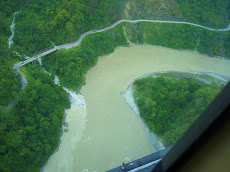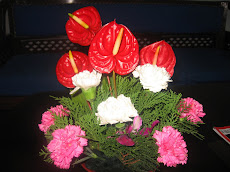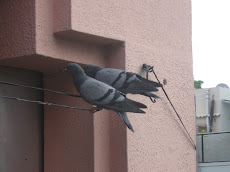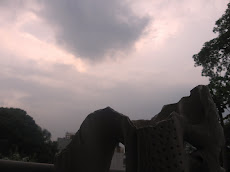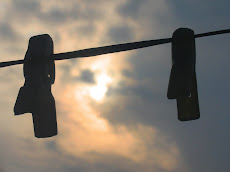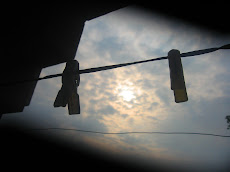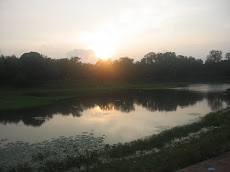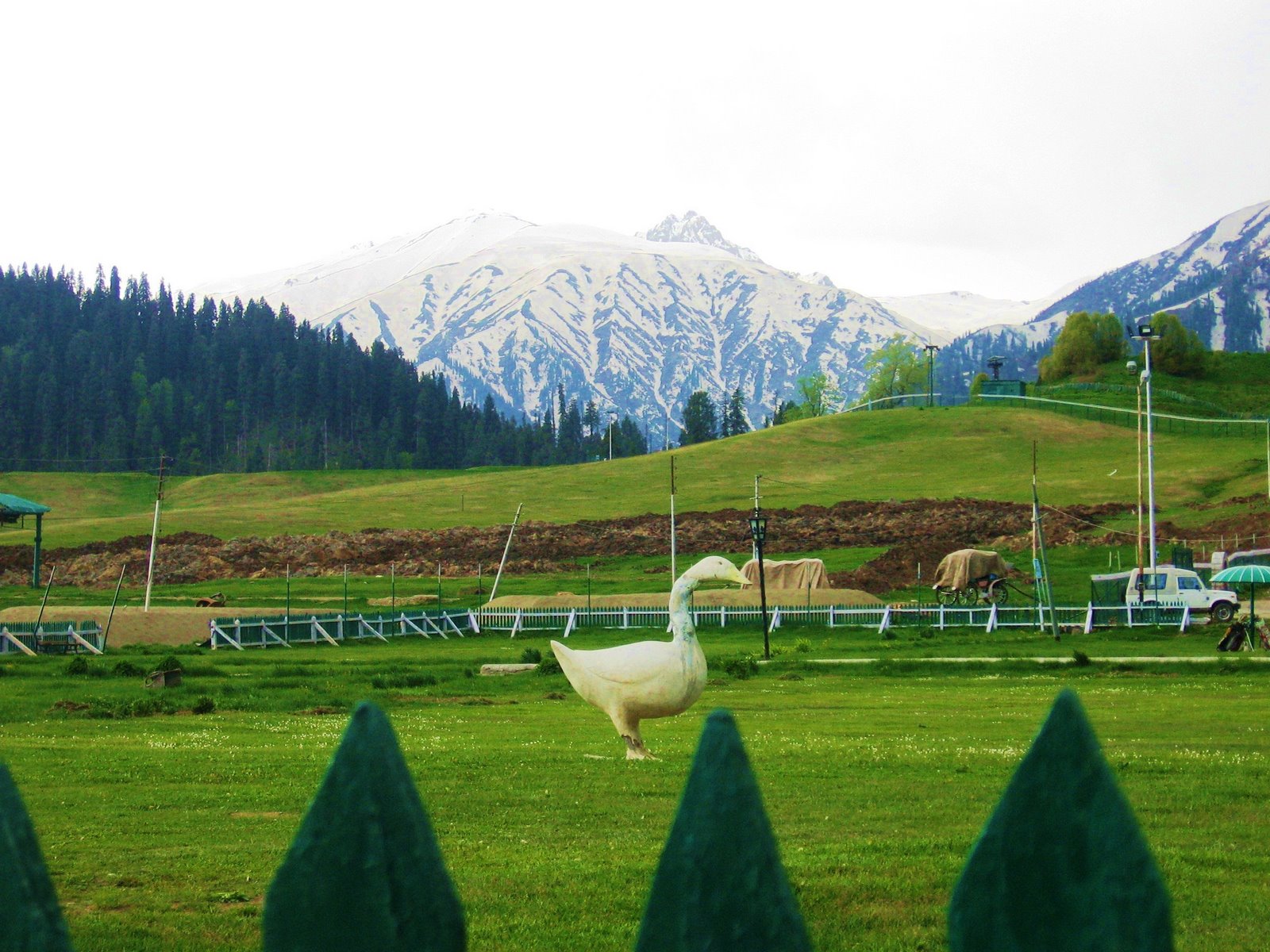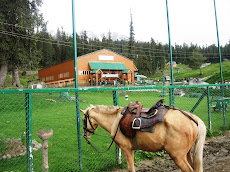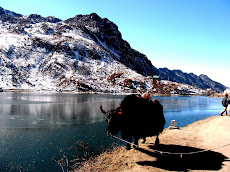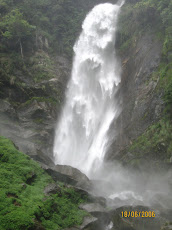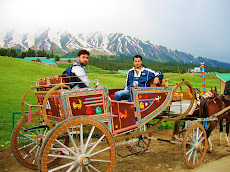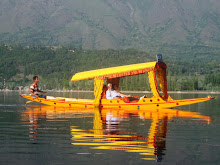Rongali Bihu marks the beginning of Assamese New Year. It is a festival of joy, coinciding with similar celebrations in West Bengal, Punjab, Manipur, Orissa, Kerala, Tamil Nadu etc. During the festival, everyone is in a jovial mood, singing and dancing with peer group or family. Mostly people throng their native places, leaving the cities deserted. It is the right moment to catch up with joint family and re strengthen the age-old bond. R.B. is the most popular and important among three Bihus celebrated. Other two being Bhogali Bihu (during Makar Sankranti) and Kongali Bihu (immediately after Diwali).
First day, known as Goru Bihu happens to be the last day of the previous year. On this day, cows are washed and worshipped. The second day, known as Manuh (human) Bihu, falls on the first day of the New Year.
Suddenly the whole environment changes together with the change in weather. Dresses of ‘other’ cultures give way to ethnic, yet expensive attire, both for women and men. People in general are so meticulously dressed that they give an impression as if marriages are taking place every day at the drop of hat.
Having made up my mind to enjoy the festivities from a close angle, I venture into the compound of Ganesh Mandir Community Centre at Khanapara. 11 pm was purposely chosen to get best out of it. As the arena was jam packed, settling down process took almost six hundred seconds. The first offering came in the form of a group song sung beautifully by a dozen little girls, wearing shocking yellow saris with tomato red borders. All of them were seated in a line. For a moment, it was silence in an otherwise noisy setting. They took time but could sing with confidence and poise for full 15 minutes. And, enthralled one and all. It set the ball rolling. Festive fervour was evident all over.
Next followed a dancing and singing troupe of young boys wearing cotton dhotis and muga silk kurtas. They were holding on to their Dhuls, flute, Gaganas, Toka, Pepas etc. In the close vicinity were pretty teenaged girls in heavy ethnic muga silk saris with long sleeve red blouses to give a contrasting effect. Their hair was neatly tied in a khupa. In such dance forms, the boys or men take the lead with hard beating of Dhuls and dancing in a circle. They set the stage literally on ‘fire’, for girls to take over, with their enigmatic smile, attractive facial expressions, graceful steps and ultimate circular movements. The dance comes to an end with vociferous beating of Dhuls and blowing of Pepas. A few selected girls twist and bend close to Pepa and strike a pose to reach the climax. Since the competitive spirit is all pervasive, they are often subjected to a variety of questions by the judges.
Upon conclusion of dance number, it was the time for vocal chord. One expected the usual stuff telecast on T.V. For a change, it was the turn of Goalpara folk songs. An eight member group led by a middle aged tall lady, wearing a chocolate coloured ethnic sari, duly supported by accompanying artists on Ghila, flute, Dhul, three Dotoras (Guitar kind of instruments) and a Sarangi simply mesmerized the audience for next hour. I could not follow the wordings of any of the seven songs but was more than convinced that she was singing straight from heart and that months or years of rehearsal were behind her deep voice. It had originality. It reflected a vibrant culture. She depicted a loud voice, while singing in a ‘Pancham Swar’. The number- Santa Re………….., probably is going to stir my imagination for a long time. A short, unassuming male companion was equally good, whenever he got a chance to sing a duet or indulge decisively into a chorus. The last song was a duet remarkably padded up with a slow, yet graceful dance movements by a dozen toddlers. They performed with care and confidence. They did not belie our expectations. But it was the ‘chocolate’ lady, who rightly occupied the centre stage.
All good things come to an end. This musical evening, being no exception. Two hours of uninterrupted entertainment gave me the needed healing and refreshment at a time when ‘Mission’ fever was at its peak. It may take some time before I lose the effect of the singer from Goalpara. She was too good to be forgotten instantly.
After soaking adequately in the festive spirit, I offer an ice-cream at the dead of the night to Jagannath, my faithful companion. He is half asleep. I return to the so-called modern world along the VIP Road. Over speeding mobikes and automobiles moving in wrong direction, semi-dark avenues, bumpy footpaths, homeless sleeping on pavements and dogs barking in the solitude of the night greet us. But I suppose, my haggard batteries are recharged to face a ‘Mission’ which will only mean business and no fun or frolic.
Sunday, April 24, 2011
Reviving Happy Moments of 1983
1983 was the year when India won the World Cricket Cup for the first time. 1983 was also the year that became a turning point of my career. I heard, did not ‘see’ the final match between West Indies and India over radio in the rented accommodation of C.B. at Patna. I happened to be there to take a competitive examination. Not everyone would be glued to radio those days even if India was on the verge of becoming a World Champion. Justifiably, C.B. preferred to attend office on this momentous day. It was hearing and believing. And only a few could afford a TV set.
With this backdrop, I would confess that I have vivid memories of brilliant team work of Mohinder Amarnath, Kapil Dev, Madan Lal, Srikant , Sandhu, Sandeep Patil, Kirti Azad and not to be forgotten, Sunil Gavaskar. Sunny, despite his overall command over game, could not come out with flying colours either in semi-final or final, both low scoring events unlike the stupendous scoring pattern at present. It was Amarnath, who managed to get Man of the Match award with his remarkable all round abilities both in semi-final and final. Thus, a low profile Indian outfit without having a player of the stature of Sachin Tendulkar had not only arrived on the scene but was going to have a decisive say in the years to come.
Scenario was different on 2ndApril 2011 when the coin itself had to be tossed twice, presumably to give a momentary setback to India, tipped as one of the hot favourites. Life came to a standstill at Guwahati at 14.30 hours. There were no radios, however. Part silence was attributed to Bandh call given by ULFA. It was the tenth World Cup final and only the third time when a ‘chasing’ team was expected to register a win. Sentiments and emotions were not only charged. They ran high. Occasional applause was accompanied by beating of drums. Crackers too were being kept ready for the ultimate moment. Telephonic contact confirmed that C.B., who had ignored the importance of 1983 final, had bunked off his office to witness Dhoni’s men in action.
As the time passed by, performances proved simply awesome from both the sides. After initial hiccup, India swung back, slowly and gradually, primarily due to patience and perseverance displayed by Gambhir and Dhoni. The defining moment came at 2300 hrs when Dhoni hit a six to wind up the game in style. It was a stunning finish by the Captain, ensuring a glorious win. Consistent play resulted into fabulous performance. After the narrow miss in the final of 2003 and nightmare of 2007, India came back systematically, grabbing the Cup for the second time in a resounding manner. While Dhoni was adjudged Man of the Match, Yuvraj Singh, having scored 362 runs and taken 15 wickets was rightly declared Man of the Tournament. Both Tendulkar and Zaheer excelled with bat and ball respectively to come close to top their tables.
History was made at Wankhede Stadium. For the first time, a host country won the cup. It was also for the first time that a team chased a high score of 275 with success. India too became only the third country after West Indies and Australia to win the coveted cup more than once.
It was the celebration time for young and old alike. Expression of joy and bonhomie witnessed within the stadium got multiplied along the main throughfares not only within the country but the Indians all over the world were seen in buoyant mood defying the darkness of night. Rather, the TV channels kept the interest alive throughout the night. Tumultuous expressions of neibours of Dhoni, Kohli’s brother, Sehwag’s tiny tot and instant Bhangra act of Harbhajan’s mother were understandable. The cream of celebration, however, was expressed through the elated mood of Gambhir’s grandmother, who was up and kicking even after midnight.
1983 and 2011 are two different eras, according to K.Srikant, a member of 1983 team and current Chairman of selectors. When Cricket has become so dominating and penetrating, it may perhaps be appropriate or sensible to draw a line of comparison with what was in store in the early eighties.
The concept of one day game itself was introduced with a degree of caution. For, the ‘gentlemen’ would not prefer a ‘hurried’ affair. In the old era, it was radio that provided the ball to ball commentary. Ears, and not the eyes had to be alert. Colour TV was yet to make an impact, having been introduced in the country as late as November 1982 with the hosting of ASIAD. Rapid commercialization, which became a foregone conclusion, was yet to begin. There would be no painting of flags on faces or parts of body, leave aside Poonam Pandays, who declared in 2011 to bare all if India was to win. This unusual legacy of South America invariably connected to Soccer was still a far cry.
There would be no ‘yagna’ or mass worship sessions to clinch the cup. Pomp and show was on a low scale. There would be less hype and euphoria and no hysteria guided by naked materialistic considerations. Thunderous applause would be seen but no scantly clad cheer girls or bohemian drummers would appear to entertain the spectators. Tickets were difficult to get even in good old days and may be, black marketing was also resorted to. But these won’t be sold at an unbelievable price of Rs. 35,000 as at Mohali or Rs. 1.5 lakhs at Mumbai. The difference rightly highlights the level of investment both in Cricket and emotions. The Presidents and Prime Ministers would hardly sit in stands to watch a high profile match in the past. Their involvement was confined to sending routine congratulatory messages through their Secretaries.
In the bygone era, cricketers would occasionally get film roles. On the contrary, now, they sell premium fashion products and earn more than the film stars in endorsements. No wonder, emotional attachment with the game is sometimes replaced by emotional fatigue. Coming to degree of response, mainly the youth would go to airport and follow the winners in procession. Nowadays, you have almost whole night of celebrations cutting across all age groups and barriers. In the changed situation the tri-colour flutters around the world in one go. Shall we believe that thanks to the craze for Cricket we are inching towards building a national character?
All said and done, be it 1983 or 2011, one had to lose. And, it was Sri Lanka, despite their better track record in World Cup. In the words of Imran Khan, if India had the advantage of playing at home, it had to also cope up with tremendous pressure. Well done India. Keep up the spirit. Don’t be carried away by the tempting bonanzas. Play the game in the spirit of game. You win or lose for the nation, not for yourself.
With this backdrop, I would confess that I have vivid memories of brilliant team work of Mohinder Amarnath, Kapil Dev, Madan Lal, Srikant , Sandhu, Sandeep Patil, Kirti Azad and not to be forgotten, Sunil Gavaskar. Sunny, despite his overall command over game, could not come out with flying colours either in semi-final or final, both low scoring events unlike the stupendous scoring pattern at present. It was Amarnath, who managed to get Man of the Match award with his remarkable all round abilities both in semi-final and final. Thus, a low profile Indian outfit without having a player of the stature of Sachin Tendulkar had not only arrived on the scene but was going to have a decisive say in the years to come.
Scenario was different on 2ndApril 2011 when the coin itself had to be tossed twice, presumably to give a momentary setback to India, tipped as one of the hot favourites. Life came to a standstill at Guwahati at 14.30 hours. There were no radios, however. Part silence was attributed to Bandh call given by ULFA. It was the tenth World Cup final and only the third time when a ‘chasing’ team was expected to register a win. Sentiments and emotions were not only charged. They ran high. Occasional applause was accompanied by beating of drums. Crackers too were being kept ready for the ultimate moment. Telephonic contact confirmed that C.B., who had ignored the importance of 1983 final, had bunked off his office to witness Dhoni’s men in action.
As the time passed by, performances proved simply awesome from both the sides. After initial hiccup, India swung back, slowly and gradually, primarily due to patience and perseverance displayed by Gambhir and Dhoni. The defining moment came at 2300 hrs when Dhoni hit a six to wind up the game in style. It was a stunning finish by the Captain, ensuring a glorious win. Consistent play resulted into fabulous performance. After the narrow miss in the final of 2003 and nightmare of 2007, India came back systematically, grabbing the Cup for the second time in a resounding manner. While Dhoni was adjudged Man of the Match, Yuvraj Singh, having scored 362 runs and taken 15 wickets was rightly declared Man of the Tournament. Both Tendulkar and Zaheer excelled with bat and ball respectively to come close to top their tables.
History was made at Wankhede Stadium. For the first time, a host country won the cup. It was also for the first time that a team chased a high score of 275 with success. India too became only the third country after West Indies and Australia to win the coveted cup more than once.
It was the celebration time for young and old alike. Expression of joy and bonhomie witnessed within the stadium got multiplied along the main throughfares not only within the country but the Indians all over the world were seen in buoyant mood defying the darkness of night. Rather, the TV channels kept the interest alive throughout the night. Tumultuous expressions of neibours of Dhoni, Kohli’s brother, Sehwag’s tiny tot and instant Bhangra act of Harbhajan’s mother were understandable. The cream of celebration, however, was expressed through the elated mood of Gambhir’s grandmother, who was up and kicking even after midnight.
1983 and 2011 are two different eras, according to K.Srikant, a member of 1983 team and current Chairman of selectors. When Cricket has become so dominating and penetrating, it may perhaps be appropriate or sensible to draw a line of comparison with what was in store in the early eighties.
The concept of one day game itself was introduced with a degree of caution. For, the ‘gentlemen’ would not prefer a ‘hurried’ affair. In the old era, it was radio that provided the ball to ball commentary. Ears, and not the eyes had to be alert. Colour TV was yet to make an impact, having been introduced in the country as late as November 1982 with the hosting of ASIAD. Rapid commercialization, which became a foregone conclusion, was yet to begin. There would be no painting of flags on faces or parts of body, leave aside Poonam Pandays, who declared in 2011 to bare all if India was to win. This unusual legacy of South America invariably connected to Soccer was still a far cry.
There would be no ‘yagna’ or mass worship sessions to clinch the cup. Pomp and show was on a low scale. There would be less hype and euphoria and no hysteria guided by naked materialistic considerations. Thunderous applause would be seen but no scantly clad cheer girls or bohemian drummers would appear to entertain the spectators. Tickets were difficult to get even in good old days and may be, black marketing was also resorted to. But these won’t be sold at an unbelievable price of Rs. 35,000 as at Mohali or Rs. 1.5 lakhs at Mumbai. The difference rightly highlights the level of investment both in Cricket and emotions. The Presidents and Prime Ministers would hardly sit in stands to watch a high profile match in the past. Their involvement was confined to sending routine congratulatory messages through their Secretaries.
In the bygone era, cricketers would occasionally get film roles. On the contrary, now, they sell premium fashion products and earn more than the film stars in endorsements. No wonder, emotional attachment with the game is sometimes replaced by emotional fatigue. Coming to degree of response, mainly the youth would go to airport and follow the winners in procession. Nowadays, you have almost whole night of celebrations cutting across all age groups and barriers. In the changed situation the tri-colour flutters around the world in one go. Shall we believe that thanks to the craze for Cricket we are inching towards building a national character?
All said and done, be it 1983 or 2011, one had to lose. And, it was Sri Lanka, despite their better track record in World Cup. In the words of Imran Khan, if India had the advantage of playing at home, it had to also cope up with tremendous pressure. Well done India. Keep up the spirit. Don’t be carried away by the tempting bonanzas. Play the game in the spirit of game. You win or lose for the nation, not for yourself.
Bird Watching
The phenomenon of season is one of the marvellous, enchanting and incredible free gifts of nature. In a normal parlance, one comes across three seasons. A deeper analysis will reveal six. Summer comes as a welcome relief to the pangs of severe winter. Reverse is also true. In between occurs the rainy season which not only balances but also cleans, refreshes and provides necessary succour. Like human beings, the animals and birds like and dislike, hate and relish, detest and enjoy a season or the other. Very few of us during our lifetime, however, take note of or are sensitive to the causes, needs, wishes and aspirations of a wonder called fauna.
Growing realization in this area will be beneficial both to the world and life, that is mild as also wild. Shall we give, therefore, some thought to an activity or a process of development that is sustainable?
To get rid of vagaries of nature, a good deal of inventions and discoveries have gradually become handy for the human beings. One can escape, therefore, the wrath of extreme nature by pressing a tiny and simple button. Why only human beings who can afford? Some of the privileged pets too lead a comfortable and sometimes, luxurious lives. Both in the West and East.
Right from beginning, shooting temperatures and dipping mercuries have propelled movement of thousands of birds from a place of extreme weather to the relatively milder pastures. They quickly learn from each other the habit of locating and then flocking around a water body thousands of miles away. Coming from a far away place, such as, Siberia, China and Afghanistan, these birds of paradise travel in a systematic way for several weeks. Popular destinations are- Bharatpur in Rajasthan, Sukhna in Chandigarh, Bhadkal Lake in Haryana, Mandwi river bank in Goa, Lake in the vicinity of Agartala and several other known and non-descript water bodies across the length and breadth of the country. Their migration period generally is noticed to be from early November to the middle of March.
While doing so, not only they experience much needed relief from the harsh and cold conditions of their habitat, they also feel at home in the company of local birds. It is a pleasure to see them grow and blossom in a new setting. Like any other 'guest,' they possess a sensitive nature. They, do not, however, have a desire to be pampered.
Bird watching during a particular time of the day is an amazingly peaceful and quiet feeling. It elevates mood. It teaches unity and understanding. Chirping of birds resonates. It has tremendous tourism potential apart from ensuring a deep healing touch. It can help in understanding and appreciating nature better. If you soak yourself in its mesmerizing beauty, it can leave a long lasting impact. It can, at the same time, free us from several misconceived notions. It has the capacity and the strength to enable us to move away from the element of artificiality.
For a change, let us attempt to peep into their innocent world whenever and wherever we get a chance. Rather, a bit of our quality time deserves to be devoted to them. They truly live and will facilitate our living. It can be a great learning experience, for, it can teach us the art of caring and sharing.
Shall we, therefore, strengthen our resolve in the dictum- unlike human beings, the birds and animals only give, do not take?
Growing realization in this area will be beneficial both to the world and life, that is mild as also wild. Shall we give, therefore, some thought to an activity or a process of development that is sustainable?
To get rid of vagaries of nature, a good deal of inventions and discoveries have gradually become handy for the human beings. One can escape, therefore, the wrath of extreme nature by pressing a tiny and simple button. Why only human beings who can afford? Some of the privileged pets too lead a comfortable and sometimes, luxurious lives. Both in the West and East.
Right from beginning, shooting temperatures and dipping mercuries have propelled movement of thousands of birds from a place of extreme weather to the relatively milder pastures. They quickly learn from each other the habit of locating and then flocking around a water body thousands of miles away. Coming from a far away place, such as, Siberia, China and Afghanistan, these birds of paradise travel in a systematic way for several weeks. Popular destinations are- Bharatpur in Rajasthan, Sukhna in Chandigarh, Bhadkal Lake in Haryana, Mandwi river bank in Goa, Lake in the vicinity of Agartala and several other known and non-descript water bodies across the length and breadth of the country. Their migration period generally is noticed to be from early November to the middle of March.
While doing so, not only they experience much needed relief from the harsh and cold conditions of their habitat, they also feel at home in the company of local birds. It is a pleasure to see them grow and blossom in a new setting. Like any other 'guest,' they possess a sensitive nature. They, do not, however, have a desire to be pampered.
Bird watching during a particular time of the day is an amazingly peaceful and quiet feeling. It elevates mood. It teaches unity and understanding. Chirping of birds resonates. It has tremendous tourism potential apart from ensuring a deep healing touch. It can help in understanding and appreciating nature better. If you soak yourself in its mesmerizing beauty, it can leave a long lasting impact. It can, at the same time, free us from several misconceived notions. It has the capacity and the strength to enable us to move away from the element of artificiality.
For a change, let us attempt to peep into their innocent world whenever and wherever we get a chance. Rather, a bit of our quality time deserves to be devoted to them. They truly live and will facilitate our living. It can be a great learning experience, for, it can teach us the art of caring and sharing.
Shall we, therefore, strengthen our resolve in the dictum- unlike human beings, the birds and animals only give, do not take?
Subscribe to:
Posts (Atom)


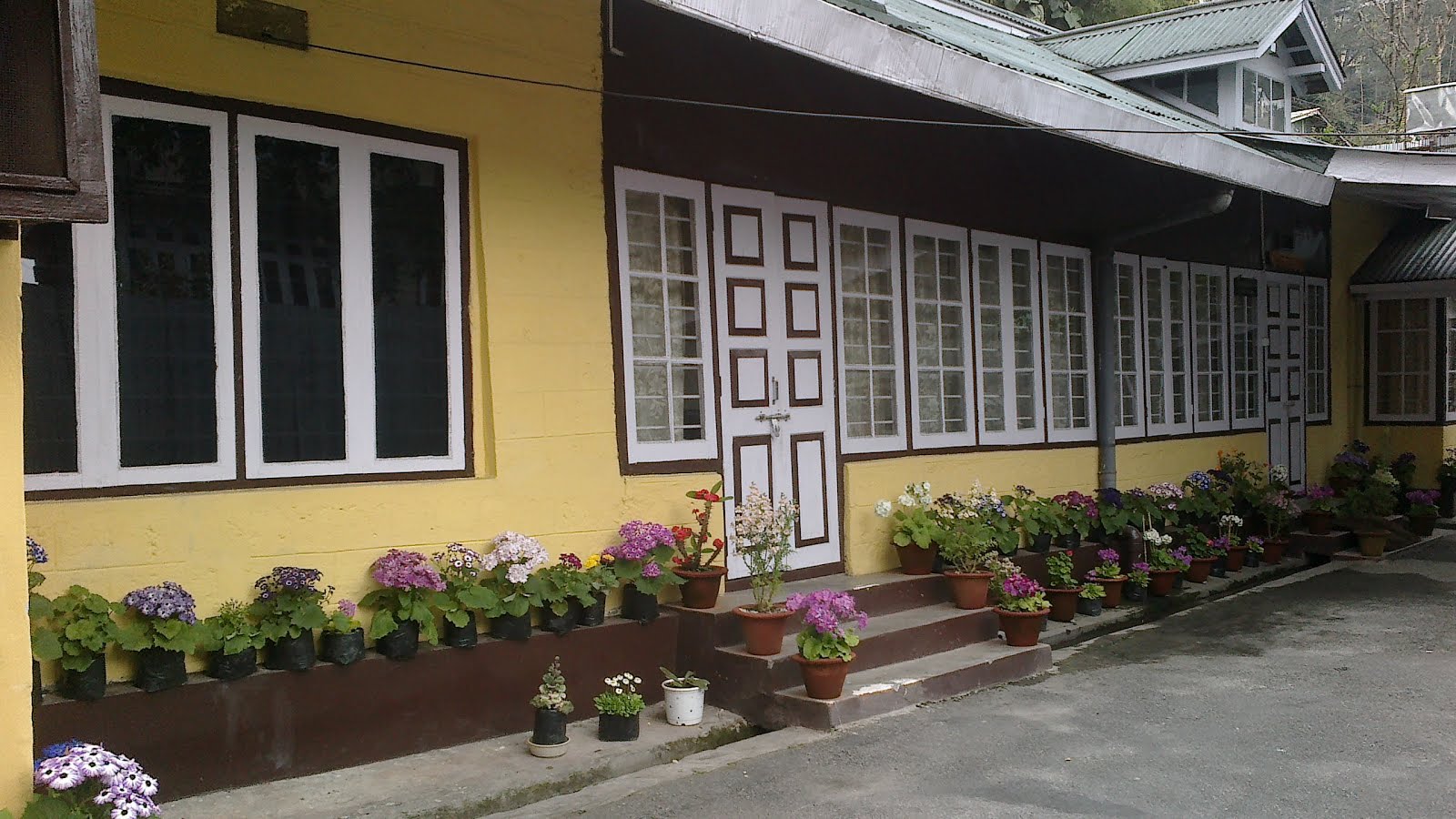







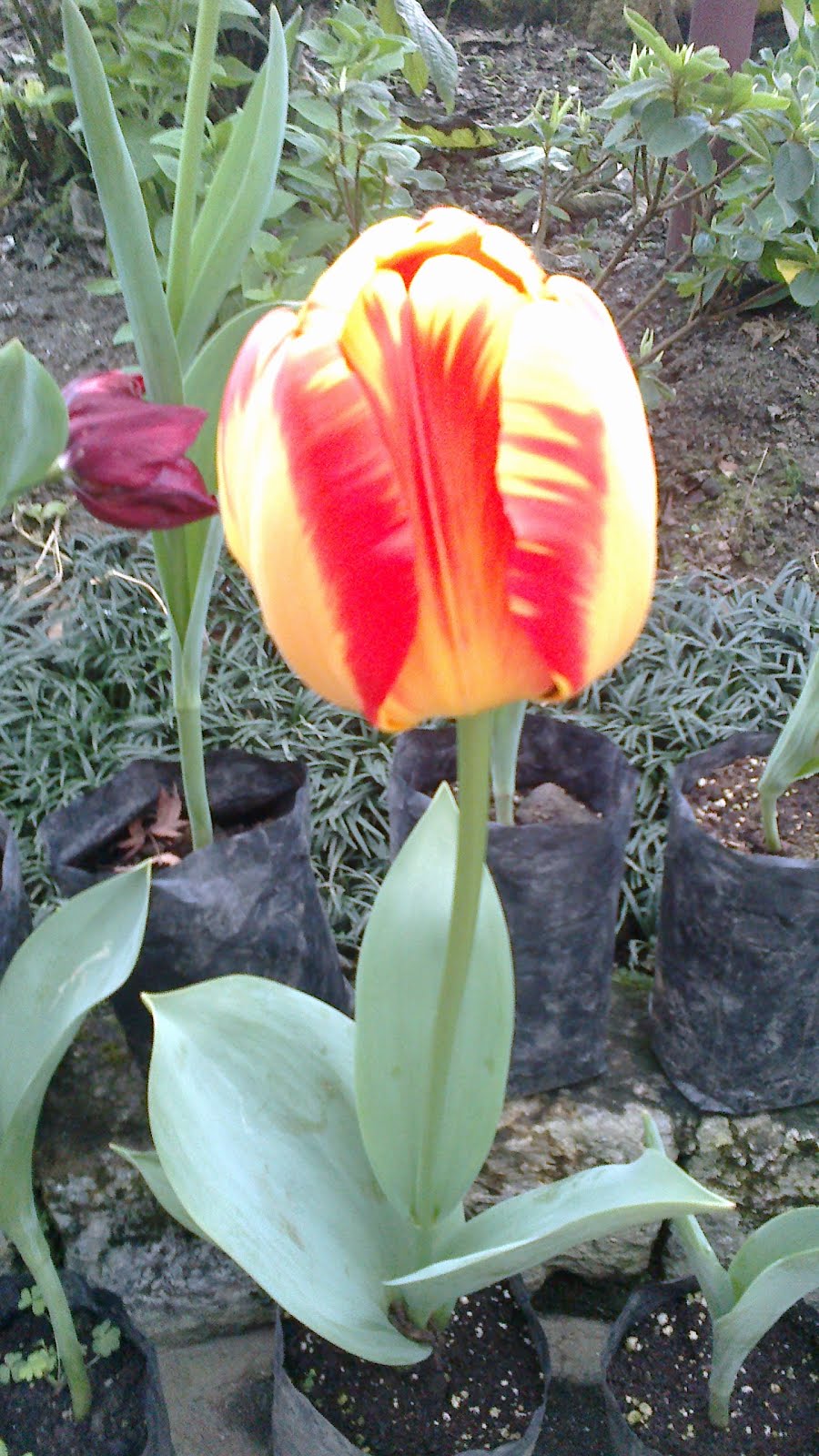
















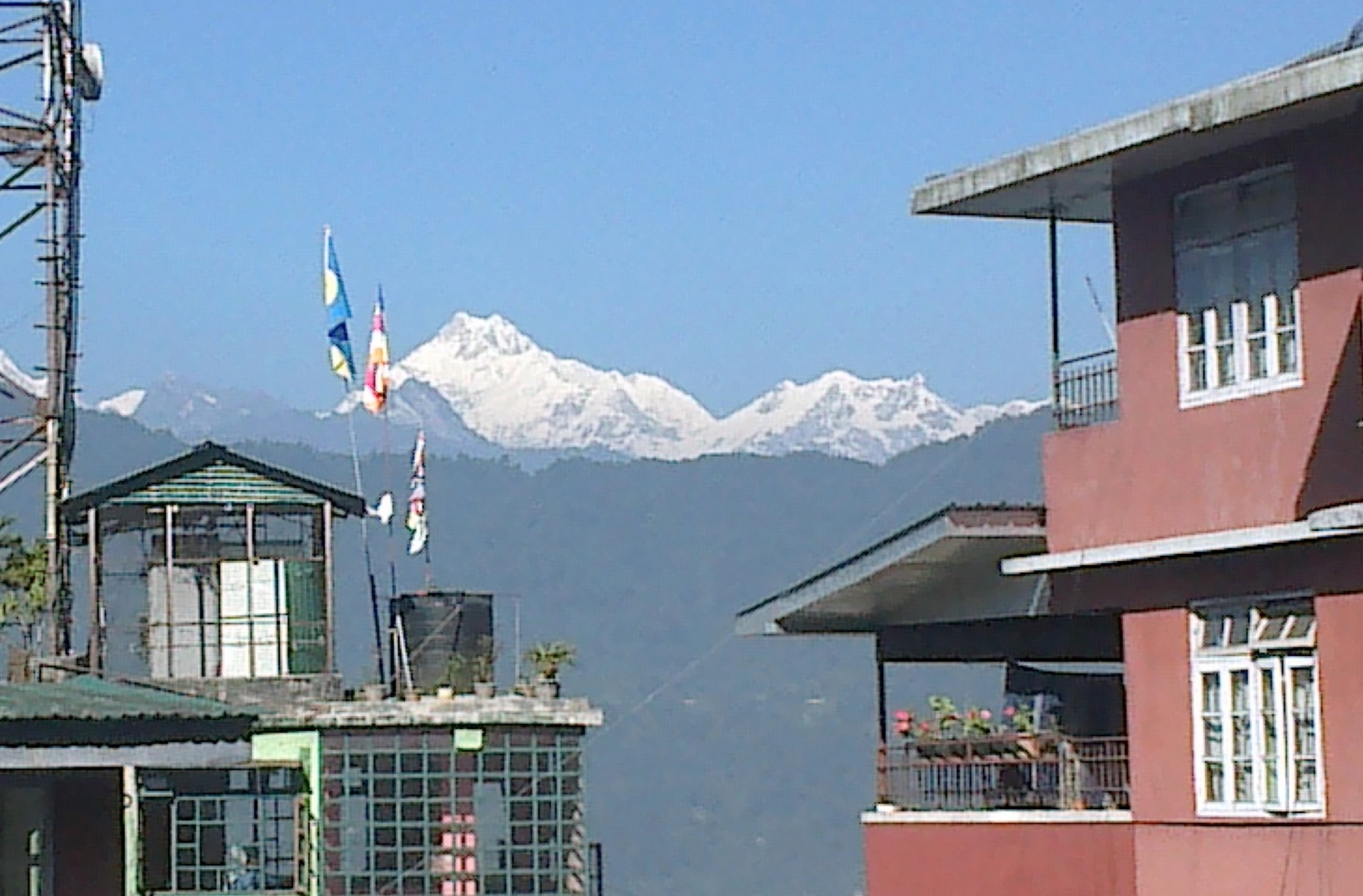


























































































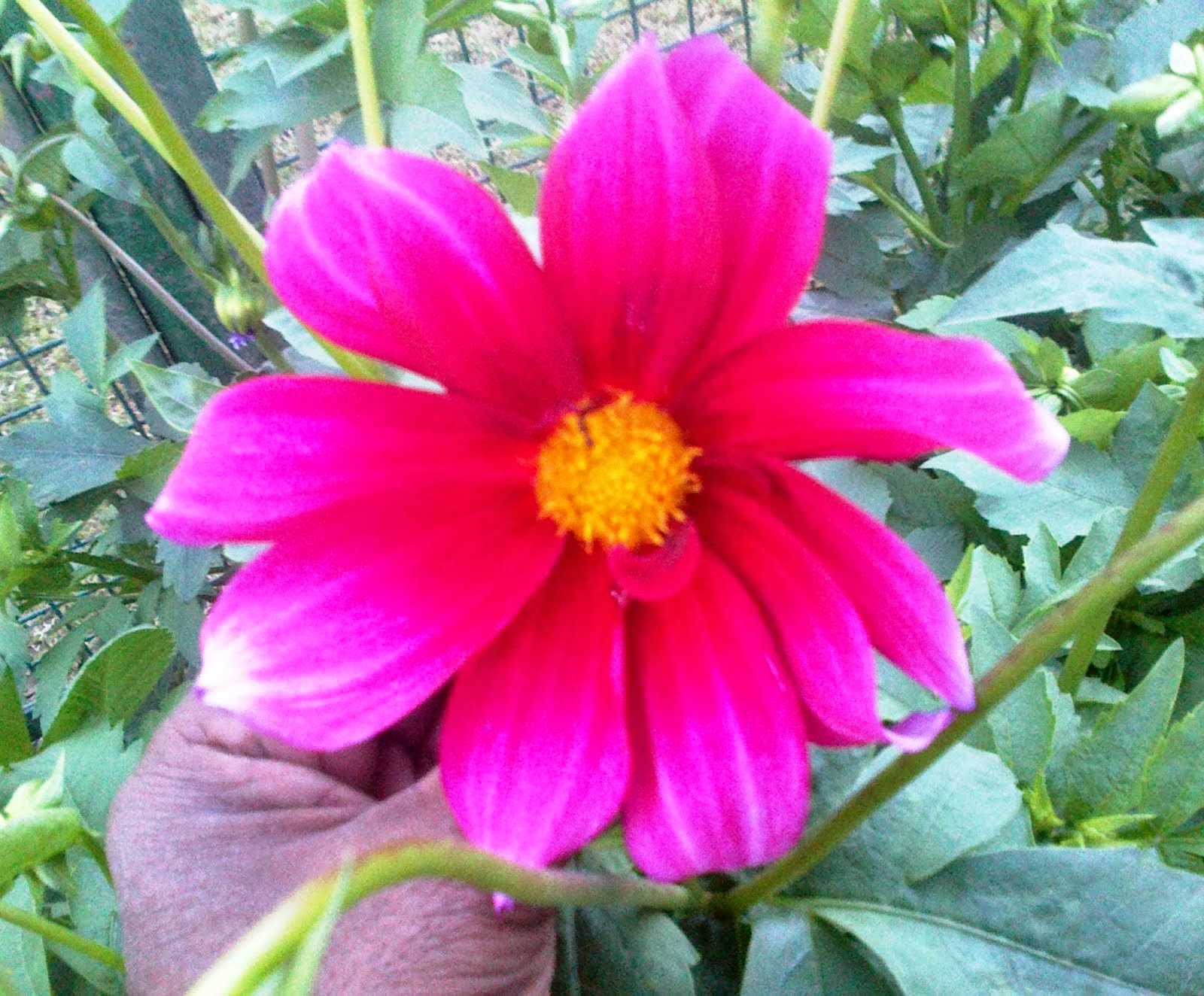



















































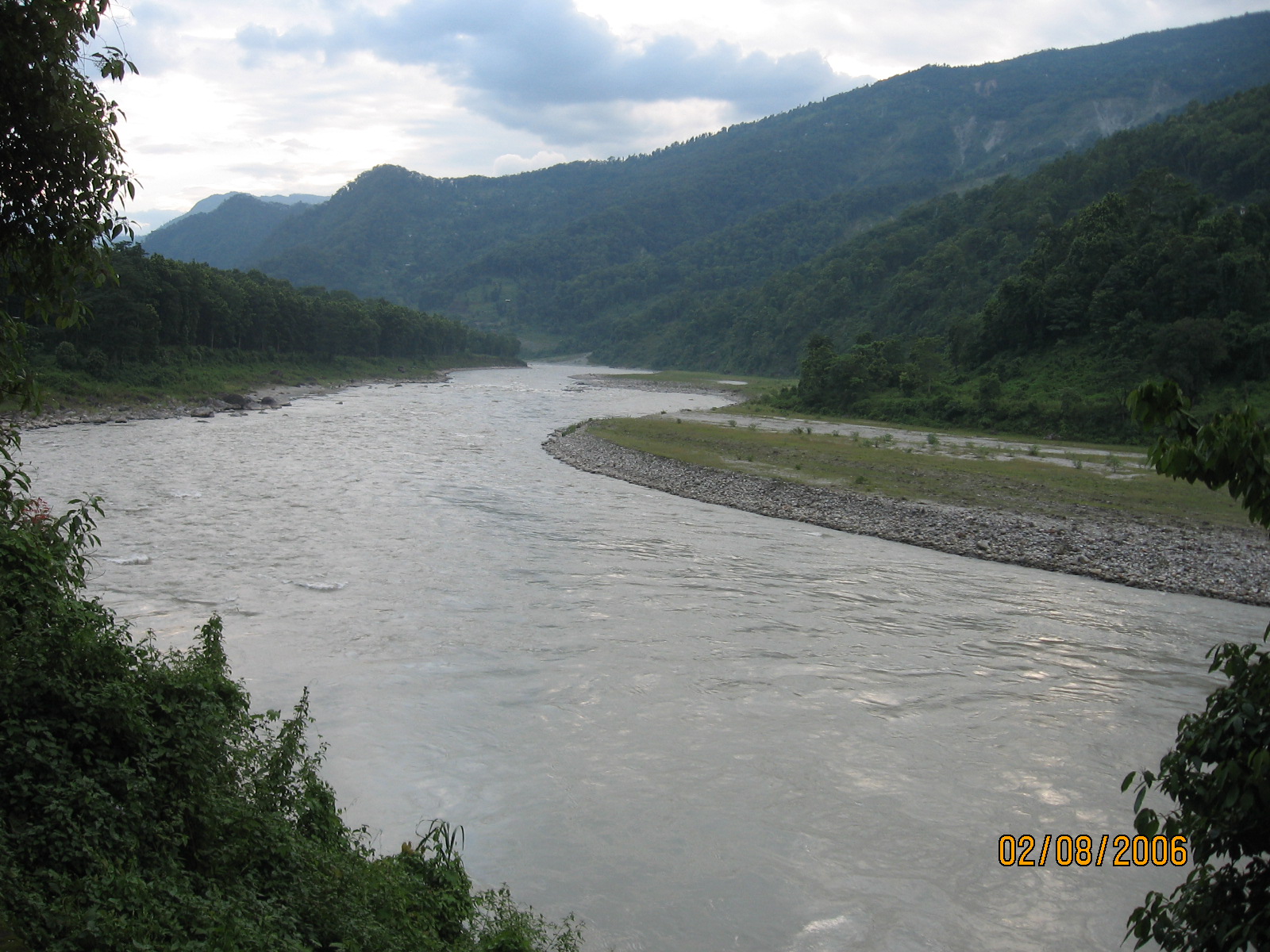


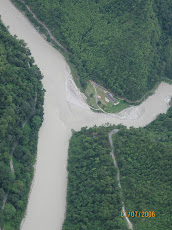
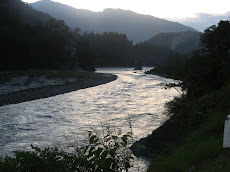
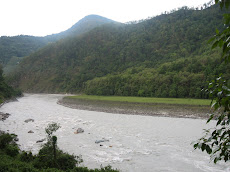
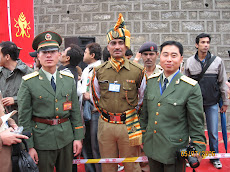
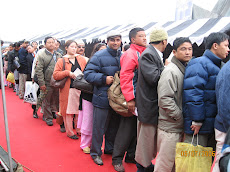
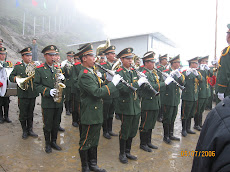


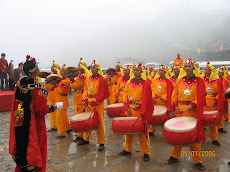
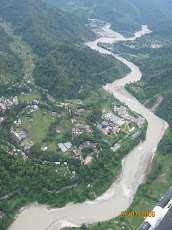




















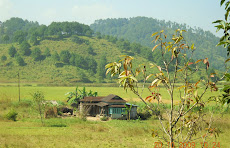
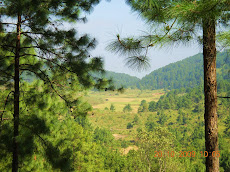








.jpg)








